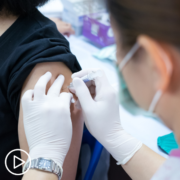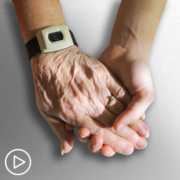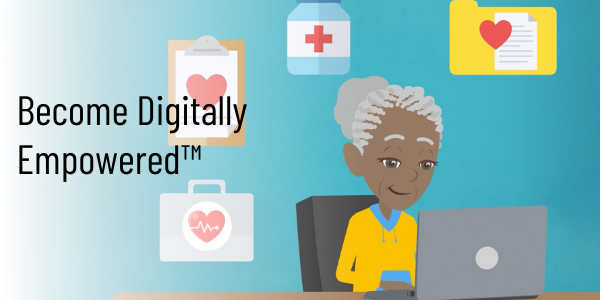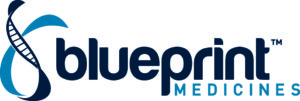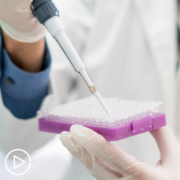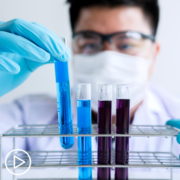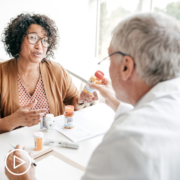How Can CLL Patients Get the Best Care No Matter Geographic Location?
For chronic lymphocytic leukemia (CLL) patients, treatment access has been limited for some Black, Indigenous, and People of Color (BIPOC) patients, non-native English speakers, and those who live in rural areas due to lack of access to technology devices, stable Internet access, and other socioeconomic factors. And though more needs to be done to improve understanding of racial variances in CLL biology and other outcome factors, the COVID-19 pandemic has actually brought about some unexpected changes in access to CLL treatment.
Patient Empowerment Network is working to help improve health outcomes for underserved CLL patients through the Best CLL Care No Matter Where You Live program. Let’s take a look at key learnings from a powerful self-advocacy vignette to advice from an expert panel with the goal of helping CLL patients on their health journeys to gain confidence around treatment decisions no matter geographic location.

CLL Patient and Care Partner Advice
Cancer patients and care partners may encounter some obstacles to patient care and access to clinical trials. But a variety of technology, language, patient monitoring, and support resources have emerged to aid in patient care including:
- Telemedicine options including televisits via smartphones, tablets, and computers
- Patient portals for requesting prescription refills, reading test results, and scheduling appointments for cancer care
- Translation services via an in-person interpreter, remote interpreter, and multi-language translation of information for cancer patients
- Remote monitoring devices for blood pressure, heart monitoring, sleep tracking, and more
- Online patient support resources including cancer treatment information and online patient support groups
According to Dr. Kathy Kim from UC Davis School of Medicine, “..so there’s been a huge upsurge in the number of hospitals and clinics and practices that have been able to implement telehealth with their patients. But there are other tools that again, have been in development that are now starting to take off under the last year, and those are remote patient monitoring devices, these are either specific medical devices, like blood pressure machines, glucose meters, some heart monitors, sleep monitors…devices that check your oxygen saturation. So, there are many medical devices that are for use in the home, that are either covered by insurance or people can buy them at the drugstore, and what has really come about this year is the ability to connect the data from the device you have in your home to your provider, so that’s been in place, but we really haven’t implemented it very many places, and now lots of places are allowing that connection to happen. So, the patient can use the device in their home and get it connected to the and have it sent to the hospital or to their doctor, so their doctor can be watching the data and also monitoring them, so that’s one really wonderful piece of progress that we’ve had in the past year.” And additional tools to help improve patient care will continue in the future.
CLL Patient Self-Advocacy Experience
Sharing the patient perspective, CLL patient William Marks discusses some of the details of his patient journey. From his diagnosis to getting connected to Dr. Awan via televisits during the COVID-19 pandemic, William shares the value of getting a second opinion, lifestyle improvements he made, and things he found helpful in taking charge to get the best CLL care possible.
William took charge of his care when he didn’t feel comfortable with his first opinion, “I had an oncologist, they wanted to do a treatment on me that I really didn’t agree with, and I found a doctor who first started out saying, “We don’t want to do this right now, we just want to kind of see what happens” and then to me, it turned out successful.”
And William took a proactive approach to his care, “I started from the beginning, I started doing everything. I started reading everything I could, I started trying to research everything, I changed my eating habits, I lost weight, I did everything I could personally, but I knew that the CLL that I had, I could not conquer by myself and alone. And so that’s when I knew, you can do everything you can, you can take all the herbs and supplements and everything you can, but then CLL is something that you really like you said, you need someone who specializes in it to know…but I’m really doing real well after six years, and I do believe that Dr. Awan saved my life.”
If you or a loved one is a CLL patient, tune in to the webinar replay to learn helpful advice for improving access to the best and latest CLL treatments no matter location or circumstances, receiving free CLL remote consultations, taking an active role in your care, working as a team with your CLL specialist, and supporting the CLL patient journey.
Resources
Increasing Treatment Access for Every CLL Patient No Matter Location
How Can CLL Patients Avoid Pandemic Challenges Without Compromising Quality of Care?
What Multi-Language Technology Innovations Are Available for Cancer Patients and Families?
What Key Questions Should CLL Patients Ask About Digital Tools Born Out of COVID?
How Can CLL Patients Mitigate Distance and Technology Barriers to Care?
Sources
Stephanie Williams, MD , Amy A. Ayers, MPH , Michelle A. T. Hildebrandt, PhD , Lorna H. McNeill, PhD , Christopher R. Flowers, MD, MS (2020). Strategies for Overcoming Disparities for Patients With Hematologic Malignancies and for Improving Enrollment on Clinical Trials. Oncology. Accessed May 26, 2021. https://www.cancernetwork.com/view/strategies-for-overcoming-disparities-for-patients-with-hematologic-malignancies-and-for
Christopher R. Flowers, MD, MS and Barbara Pro, MD (2013). Racial differences in chronic lymphocytic leukemia: Digging deeper. Cancer. Accessed May 26, 2021. https://www.ncbi.nlm.nih.gov/pmc/articles/PMC3834561/


